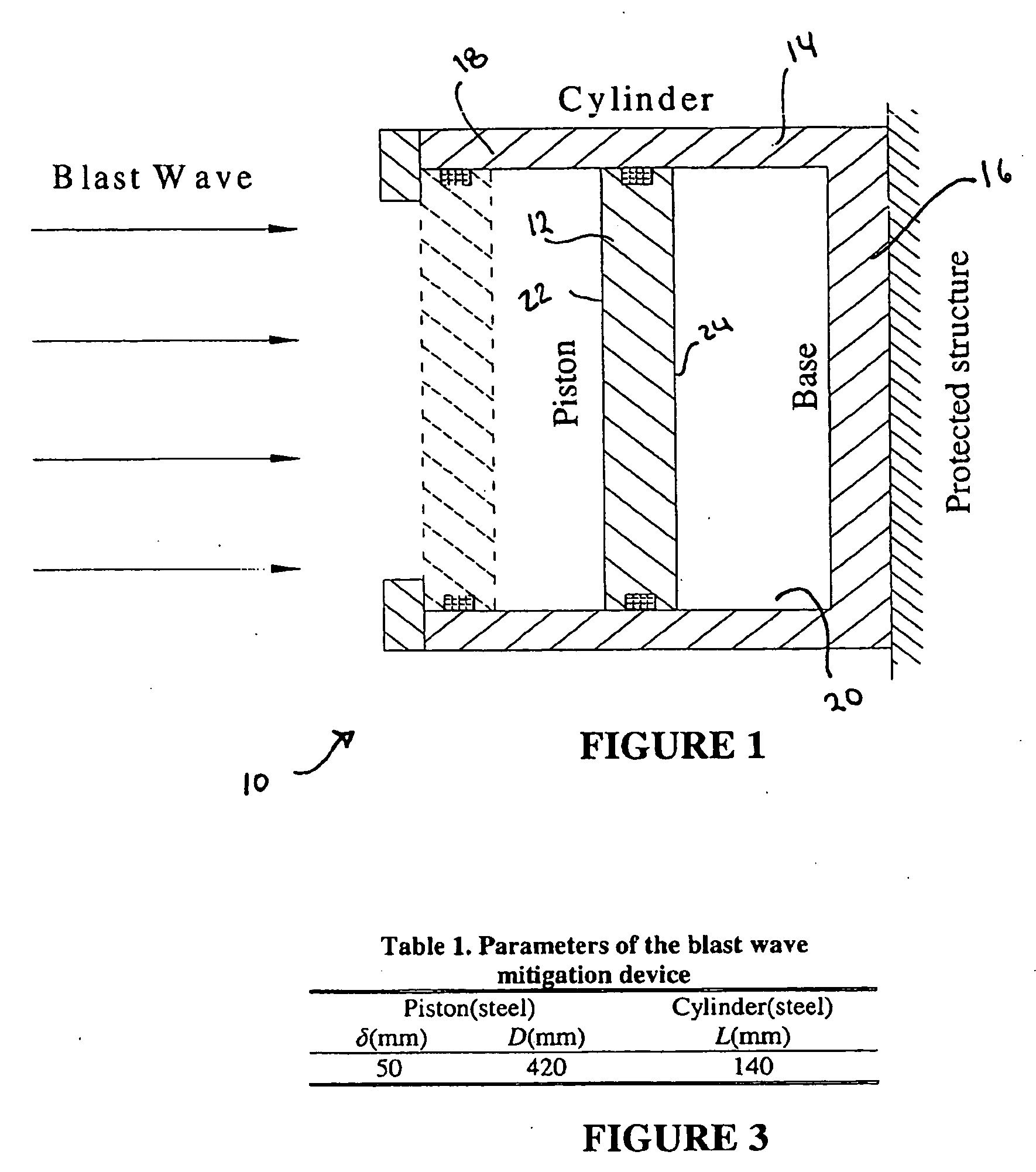Method and apparatus for shock wave mitigation
a technology of shock wave and apparatus, applied in the direction of shields, reactive armour, transportation and packaging, etc., can solve the problems of ineffective blast wave impact, destroying vehicles, incapacitate personnel, and thousands of deaths of military personnel, and achieve the effect of reducing the impact of blast wav
- Summary
- Abstract
- Description
- Claims
- Application Information
AI Technical Summary
Benefits of technology
Problems solved by technology
Method used
Image
Examples
example
[0027] In an effort to determine the effectiveness of the blast mitigation device 10 of the present invention, the blast mitigation device was setup as shown in FIG. 2. A honeycomb structure, which can withstand a peak pressure of about 2 MPa, is placed on a steel test platform. The honeycomb structure was covered by either the blast wave mitigation device 10 of the present invention or a control device. The control device has the same dimensions and weight as the blast wave mitigation device. A rolled homogeneous armor steel plate is used to protect the honeycomb structure that is not covered by the blast wave mitigation and control device 10. A hole was cut at the center of the steel plate to expose the blast wave mitigation device and control device. The diameter of the hole is the same as that of the blast wave mitigation device. The steel plate has a thickness of approximately 9 cm. The blast wave is generated by detonating 1.36 kg of Pentolite at a distance of 0.26 m. This set...
PUM
 Login to View More
Login to View More Abstract
Description
Claims
Application Information
 Login to View More
Login to View More - R&D
- Intellectual Property
- Life Sciences
- Materials
- Tech Scout
- Unparalleled Data Quality
- Higher Quality Content
- 60% Fewer Hallucinations
Browse by: Latest US Patents, China's latest patents, Technical Efficacy Thesaurus, Application Domain, Technology Topic, Popular Technical Reports.
© 2025 PatSnap. All rights reserved.Legal|Privacy policy|Modern Slavery Act Transparency Statement|Sitemap|About US| Contact US: help@patsnap.com



